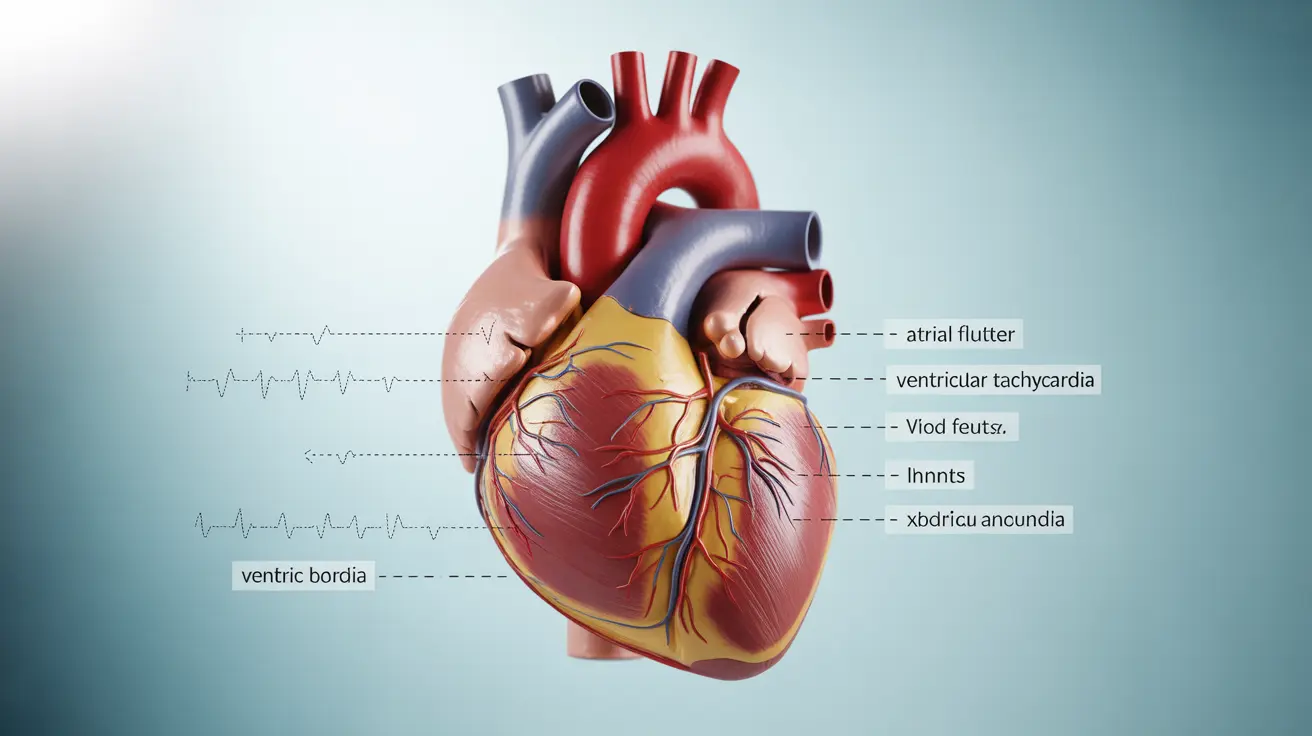Heart rhythm disorders can be confusing, especially when medical terminology seems to use different words for similar conditions. Understanding the distinction between arrhythmia and dysrhythmia is crucial for anyone concerned about their heart health or experiencing irregular heartbeats.
In this comprehensive guide, we'll explore these cardiac rhythm disorders, their symptoms, treatment options, and how lifestyle changes can help manage these conditions effectively.
Defining Arrhythmia and Dysrhythmia
While both terms refer to irregular heart rhythms, "arrhythmia" is the more commonly used medical term in modern healthcare. The prefix "a-" means "without," while "dys-" means "difficult" or "abnormal." Both terms describe abnormal heart rhythms, but arrhythmia has become the standard terminology in medical literature and clinical practice.
Common Symptoms and Warning Signs
Recognizing the symptoms of a heart rhythm disorder is essential for early intervention. Common signs include:
- Palpitations or racing heartbeat
- Slow or irregular pulse
- Shortness of breath
- Dizziness or lightheadedness
- Chest discomfort
- Fatigue
- Weakness
- Near-fainting or fainting episodes
Treatment Approaches and Management Options
Medical Interventions
Treatment for heart rhythm disorders varies depending on the specific type and severity. Common medical approaches include:
- Medications to control heart rate
- Anti-arrhythmic drugs
- Blood thinners to prevent clots
- Cardioversion procedures
- Catheter ablation
- Pacemaker or defibrillator implantation
Lifestyle Management
Many heart rhythm disorders can be effectively managed through lifestyle modifications. Key strategies include:
- Stress reduction techniques
- Regular physical activity
- Maintaining a healthy weight
- Getting adequate sleep
- Limiting alcohol and caffeine intake
- Quitting smoking
Prevention Through Lifestyle Changes
Several lifestyle factors can contribute to or trigger heart rhythm disorders. Taking preventive measures can help reduce the risk or frequency of episodes:
Diet and Nutrition
A heart-healthy diet plays a crucial role in preventing and managing rhythm disorders. Focus on:
- Reducing sodium intake
- Eating plenty of fruits and vegetables
- Choosing lean proteins
- Including omega-3 rich foods
- Limiting processed foods and added sugars
Exercise and Physical Activity
Regular exercise helps maintain heart health, but it's important to follow these guidelines:
- Start slowly and gradually increase intensity
- Choose activities appropriate for your fitness level
- Monitor your heart rate during exercise
- Stay well-hydrated
- Listen to your body and avoid overexertion
Frequently Asked Questions
What are the symptoms of arrhythmia or dysrhythmia, and how do they feel?
Symptoms typically include heart palpitations (feeling like your heart is racing, fluttering, or skipping beats), shortness of breath, chest discomfort, dizziness, and fatigue. Some people describe the sensation as a "flip-flopping" in their chest or sudden awareness of their heartbeat.
How is arrhythmia or dysrhythmia typically treated, and what are the options for management?
Treatment options range from medications (such as beta-blockers or anti-arrhythmic drugs) to procedures like cardioversion or catheter ablation. In some cases, medical devices like pacemakers or defibrillators may be necessary. The specific treatment depends on the type and severity of the rhythm disorder.
Can arrhythmias be caused by lifestyle factors, and if so, how can they be prevented?
Yes, lifestyle factors can trigger or worsen arrhythmias. Prevention strategies include maintaining a healthy weight, limiting alcohol and caffeine, managing stress, getting adequate sleep, and avoiding tobacco use. Regular exercise and a heart-healthy diet can also help prevent episodes.
What are the differences between arrhythmia and dysrhythmia, and which term is more commonly used?
Both terms describe abnormal heart rhythms, but "arrhythmia" is the more commonly used term in modern medicine. While technically similar in meaning, arrhythmia has become the standard terminology in medical literature and clinical practice.
How can diet and exercise help manage arrhythmias or prevent their occurrence?
A balanced diet rich in nutrients and regular physical activity can help maintain healthy heart rhythm by reducing risk factors like high blood pressure and obesity. Exercise strengthens the heart muscle, while proper nutrition supports overall cardiovascular health. However, it's important to consult healthcare providers about appropriate exercise levels and dietary modifications for individual cases.




